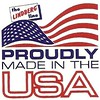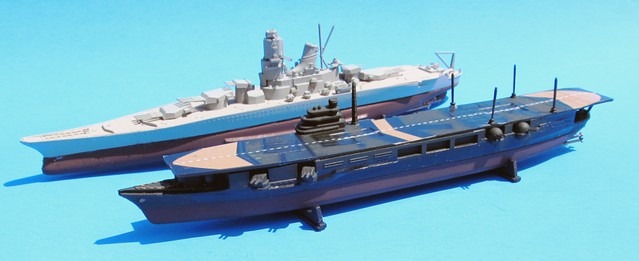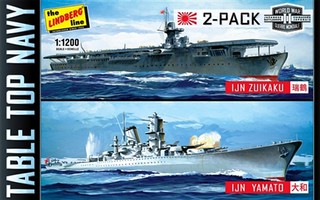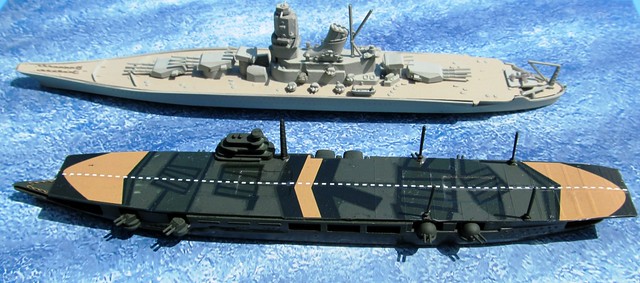Right On Replicas, LLC SnapShot Review 20150709*
1940 Ford Convertible 1:32 Scale Lindberg Model Kit #HL119 Review

Review and Photos by Alan Mann 
The Ford line of cars was updated in 1937 with one major change, the introduction of an entry-level 136 CID (2.2 L) V8 in addition to the popular 221 CID (3.6 L) flathead V8. The model was a refresh of its predecessor, the Model 48, and was the company’s main product. At the start of production, it cost $850. The 1937 Ford featured a more rounded look with fine horizontal bars in the convex front and hood-side grilles. A high flat-topped hood dominated the front look of the 1940 model, as the grille spread out to reach the fenders to differentiate the Deluxe line. The standard Ford inherited the grille of the 1939 model with blackout on each side of a heavy chrome center; heavier headlight surrounds serve as another major differentiator from the 1939. 1940 was the last year of the 1937 design and its smaller V8 engine. The “Fat Fender†design became one of the favorites for “Hot Rodders†to customize. . Early stock car racing drivers also used Fords of this generation among other cars. This Ford also formed the basis for a style of dirt track racing car.
For the modeler: This Snapshot covers the Round2 Kit #HL119 re-release (Re-Pop) of the Lindberg ’40 Ford Convertible. This kit has seen a few releases and this is a replication of the original Box Art. There is no Skill Level listed but this would be a Skill  Level 2 for Moderate builders. The kit contains 31 parts molded in Red and Clear. As a Curbside kit there is no motor detail and interior detail is minimal. The whole build is about the body. This is a multiple part body and it would look best with  Bare Metal Foil as there is no Chrome at all, however, Silver paint can be used if you do not use Foil. The tires are two part Red Styrene plastic and not Vinyl. No decals are included in this build. The instruction sheet is a small booklet with fairly detailed pictures for the build process. This is not a difficult kit. Overall dimensions are: Length: 5-1/2â€, Width: 2â€, Height: 2â€.
Level 2 for Moderate builders. The kit contains 31 parts molded in Red and Clear. As a Curbside kit there is no motor detail and interior detail is minimal. The whole build is about the body. This is a multiple part body and it would look best with  Bare Metal Foil as there is no Chrome at all, however, Silver paint can be used if you do not use Foil. The tires are two part Red Styrene plastic and not Vinyl. No decals are included in this build. The instruction sheet is a small booklet with fairly detailed pictures for the build process. This is not a difficult kit. Overall dimensions are: Length: 5-1/2â€, Width: 2â€, Height: 2â€.
Construction: Â begins with the body and interior. Paint work and assembly is difficult with this method as you must paint all the parts prior to construction and do all foil work and clear coats first. This means handling the finished body during construction and possibly damaging the finish. Take care while building this. For ease of painting assemble the sides, trunk and hood prior to painting  them. Use the chassis to line everything up but do not glue it to the chassis. For the tires Gravity Colors has a Tire Rubber paint that closely resembles actual tire colors and is quite easy to apply. For the grille, headlight bezels and bumpers Alclad II Chrome paint is a great alternative to Silver and gives a quite realistic Chrome look. Install the front suspension. Paint the chassis Flat Black and tape off the fenders. Paint the fenders Body Color. Paint the interior of the body Interior Color and the exterior Body Color. The interior is painted. The dash top is Body Color and the front panels Interior Color. The steering wheel is Interior Color. Paint the tire Whitewalls and Hubcaps.
them. Use the chassis to line everything up but do not glue it to the chassis. For the tires Gravity Colors has a Tire Rubber paint that closely resembles actual tire colors and is quite easy to apply. For the grille, headlight bezels and bumpers Alclad II Chrome paint is a great alternative to Silver and gives a quite realistic Chrome look. Install the front suspension. Paint the chassis Flat Black and tape off the fenders. Paint the fenders Body Color. Paint the interior of the body Interior Color and the exterior Body Color. The interior is painted. The dash top is Body Color and the front panels Interior Color. The steering wheel is Interior Color. Paint the tire Whitewalls and Hubcaps.
Assembly is quite easy and quick with all the parts painted. On the chassis install the tires. Add the grille, headlights and bumpers. There are pins on the interior floor to install the interior in place. On the body install the glass with Elmer’s Glue. Add the dash in place. Final assembly is attaching the body to the chassis and adding the steering wheel and column.

Overall: Round2 continues to bring back the kits of yesterday with the Lindberg Line. For many of the older builders this give them a chance to relive the building methods from back in the early days of modeling. For the newer builders it is a glimpse into how it was done in the past. While the overall fit is not bad and assembly is fairly simple these kits were devoid of much of the details of the new products. This build is a curbside with no motor, very limited chassis details and the interior is overly simplistic. The multiple part body does make painting more of a challenge and I do recommend assembly prior to paint. I did decide to paint on the trim instead of foil it, even though the trim was defined enough to foil I had issues with my foil staying adhered in such a small strip. Once painted the car assembly is very fast, it is only a few parts to assemble. The finished build does make a nice shelf sitter but I would not enter it into a contest. One other use for these kits is that they adapt well to 1:32 scale slot car chassis. Overall, I would give this one an 8 on a scale of 1 to 10.
Right On Replicas, LLC ©2015 All rights reserved. *All registered trademarks are the property of their respective brands. Follow the manufacturer’s safety recommendations for any product mentioned here.
Here is a reference to the two products I mentioned in this review:
http://gravitycolors.com/us/ This is a Hobby Use paint that is Airbrush Ready and offers an Automotive Use quality finish. You can order Automotive Brand specific colors and they will take requests. It is one of the easiest solvent based paints I have used.
http://alclad2.com/ Â This product has been around a while and widely known. It is an Airbrush Ready paint to give a more realistic look to Chrome. With a simple application and no buffing or polishing required it is one of the easiest Re-Chroming alternatives on the market.





